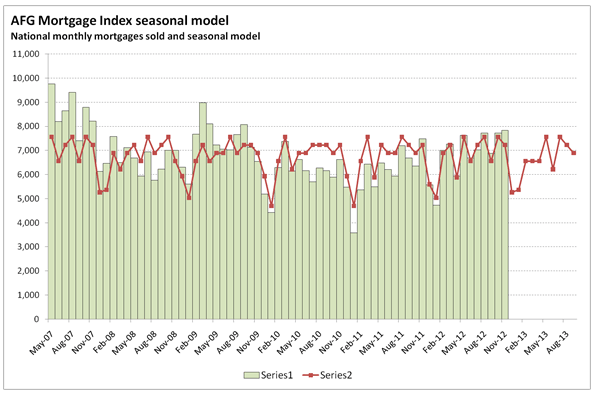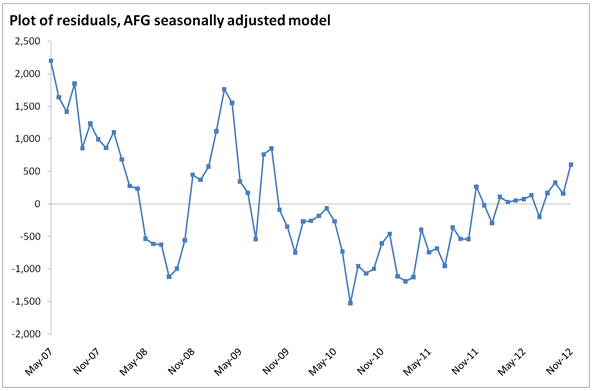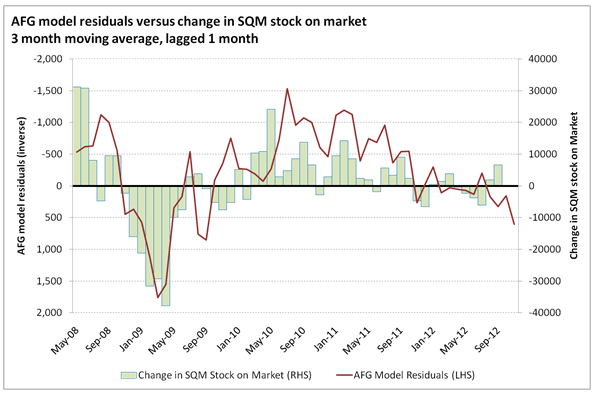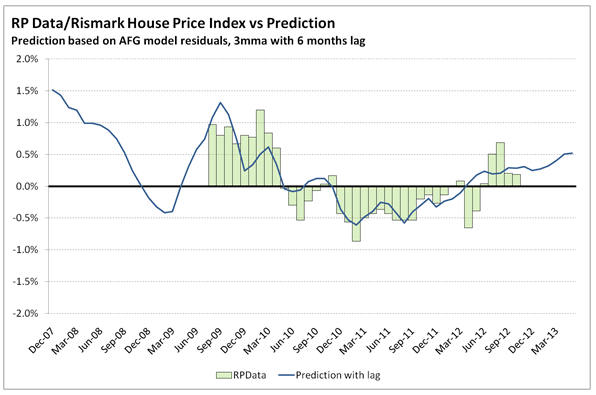
Please find below Nathan Webb’s latest analysis of the November AFG finance statistics.
It’s funny how news can be presented. In the lead-up to the December interest rate decision, AFG were busy telling everyone how first home buyers had all but disappeared in NSW and QLD. Meanwhile, they recorded one of their best months since 2009, and the best month after adjusting for the number of trading days. Yes, sales are booming at AFG, but the struggling punters still need a handout.
Although the headline number for November was roughly the same the same as October (7831 versus 7718 in October), November only had 22 trading days, and less if you’re a Melbournite. And that’s important, because much of the variability of the AFG numbers can be explained by changes in the number of trading days from month to month. So let’s strip that away, and see why November was such as good month for AFG.
The following charts begin by making an adjustment for the number of trading days in each month, and using the difference above or below average to predict changes in house prices. That is, when mortgage sales in any given month, adjusted for the number of trading days in that month, are above average, then you can expect prices to rise.
The first chart shows the overall view, with the bars showing the actual volumes, and the red line indicating where they should have been after adjustments. The last 12 months have been pretty much on the mark, until recently. But it’s hard to see in this chart, so the next chart plots the difference between the two lines, referred to as the “residuals”.

This chart shows that after being pretty much at zero for the most of 2012, mortgage sales are now strongly in the positive.

The residuals are then compared to SQM’s stock on market report, where there is a very strong negative correlation. The third chart shows this, with the residual inverted and laid over the top of the change in Stock on Market. I’ve used the 3 month moving average to smooth things out. The AFG results lead the 3mma by 1 month. The chart is showing that after a period of stability, expect some small falls in the stock on market over the next couple of months. But we’re also seeing a divergence here, so this will be something to watch. It’s happened before, but only temporarily. If they’re still going in opposite directions by March 2013, then it might indicate a breakdown in any historical relationships.

The correlation with RP Data’s house price index is also pretty good, apart from the recent volatility. This pattern of extreme volatility should be expected to continue, thanks to the new daily series. The overall trend points to very modest growth, in the vicinity of 2-3% per annum, for the rest of the year, before accelerating into 2013, at about 5-7% p.a.

So a cracking month for AFG and anyone invested in residential property.

